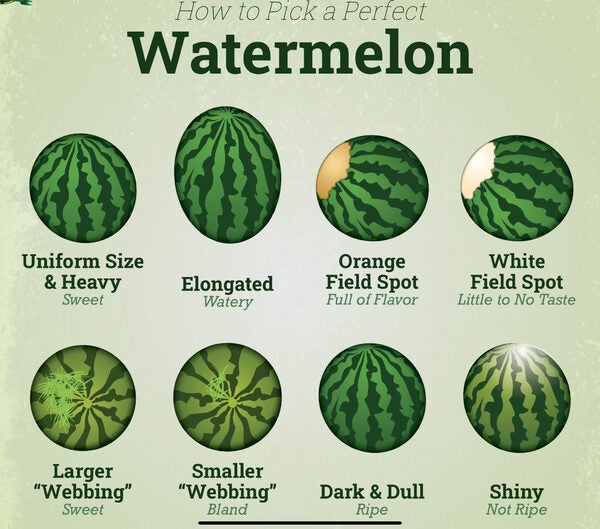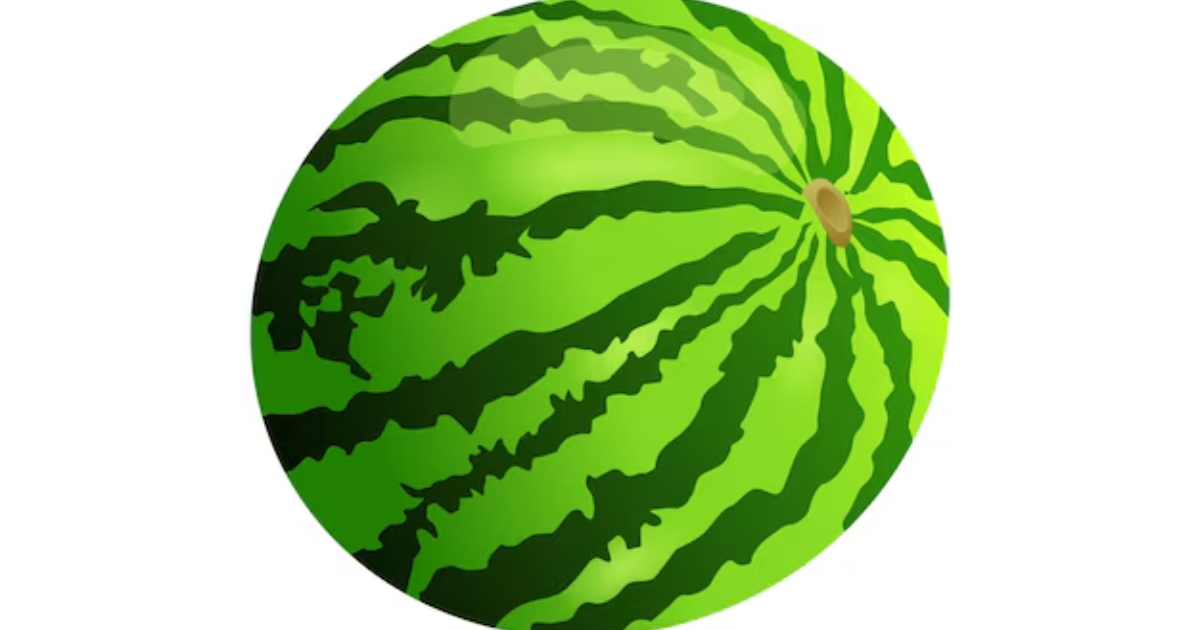Watermelon is the quintessential summer fruit—refreshing, hydrating, and naturally sweet. But selecting the perfect watermelon can sometimes feel like a guessing game. With so many varieties and ripeness indicators, it’s easy to feel overwhelmed. However, by understanding a few key factors, you can confidently pick a watermelon that will delight your taste buds.
📝 Table of Contents
- Visual Indicators of Ripeness
- The Sound Test: Tapping for Quality
- Weight Matters: Heft Equals Freshness
- Common Mistakes to Avoid
- Seasonal Tips for Optimal Selection
- Storage and Preservation Tips
- Frequently Asked Questions
- Conclusion: Share Your Tips!
👀 Visual Indicators of Ripeness
When selecting a watermelon, appearance is one of the most telling factors. Here’s what you should look for:
- Field Spot Color: The field spot is the area where the watermelon rested on the ground while growing. A ripe watermelon will often have a creamy yellow or golden spot. If the spot is white or pale yellow, the watermelon may be under-ripe.
- Skin Texture: The skin should appear dull, not shiny. A shiny exterior is a typical sign of under-ripeness, while a dull finish indicates the fruit is more likely to be fully ripe.
- Sugar Webbing: Look for dark, web-like sugar spots on the rind. These sugar veins indicate that the watermelon is high in sweetness and well-ripened.
- Symmetry: A symmetrical watermelon is a good sign that it has ripened evenly. An irregular shape could suggest uneven ripening, which may affect the taste.
🔊 The Sound Test: Tapping for Quality
One classic method of testing a watermelon’s ripeness is the “sound test”:
- Tapping: Tap the watermelon gently with your knuckles. A ripe watermelon will produce a deep, hollow sound. This indicates it is full of water and juice, signaling its freshness.
- Avoid: A dull or flat sound suggests the watermelon may be overripe or lacking in moisture.
⚖️ Weight Matters: Heft Equals Freshness
The weight of a watermelon is another great indicator of its quality:
- Heavier for Size: When choosing among several watermelons of similar size, pick the one that feels the heaviest. A heavier watermelon indicates that it is dense with water and juice, which are crucial to its sweetness and texture.
- Avoid: Watermelons that feel lighter than expected for their size may be less flavorful, as they may have lost water content or were harvested too early.

🚫 Common Mistakes to Avoid
Here are some common mistakes people make when choosing watermelons—and how to avoid them:
- Ignoring the Field Spot: Always check the field spot. If it’s white or pale, the watermelon is likely under-ripe.
- Overlooking the Sound Test: Never skip the tapping test! This simple trick can help you avoid picking a subpar watermelon.
- Neglecting Weight Comparison: Never assume that all watermelons of the same size weigh the same. Make sure to compare their weights before deciding which one to buy.
- Choosing Shiny Skins: A shiny skin can indicate that the watermelon is under-ripe. Look for a more matte finish to ensure ripeness.
🌞 Seasonal Tips for Optimal Selection
Watermelons thrive in warm temperatures, but how you select them can vary by season. Here are some tips to make the most of watermelon season:
- Peak Season: Watermelon season typically peaks during the summer months, making this the best time to find ripe, juicy watermelons.
- Buy Locally: Check out local farmers’ markets for the freshest watermelons. Local produce often means quicker harvest-to-sale times and better flavor.
- Storage: If you happen to purchase a watermelon before it’s fully ripe, store it at room temperature until it reaches its optimal ripeness. Once ripe, refrigerate it to keep it fresh for longer.
🧊 Storage and Preservation Tips
To maximize the freshness and shelf-life of your watermelon, follow these storage tips:
- Whole Watermelon: If the watermelon is uncut, store it at room temperature until it ripens. Once ripe, keep it refrigerated to maintain its sweetness and moisture.
- Cut Watermelon: Once cut, wrap the watermelon slices in plastic wrap or place them in an airtight container. Refrigerate and consume within 3–4 days.
- Freezing: If you have leftover watermelon that you won’t finish in time, cut it into cubes and freeze it. Frozen watermelon is perfect for smoothies or refreshing drinks.
❓ Frequently Asked Questions
Q1: Can I ripen a watermelon after purchasing it?
A: Unfortunately, watermelons do not continue to ripen much after being picked. It’s best to select a watermelon that is already ripe when you buy it.
Q2: How can I tell if a watermelon is sweet?
A: Look for a creamy yellow field spot, dark sugar webbing, and a hollow sound when you tap it. These are signs that the watermelon will be sweet and ripe.
Q3: Are seedless watermelons less flavorful?
A: Not necessarily! Seedless watermelons can be just as sweet and flavorful as seeded varieties. The flavor largely depends on the variety and ripeness.
Agrilife Today – Learn more about how to select a sweet watermelon by understanding the key indicators for ripeness: Three Tips to Pick Out a Sweet Watermelon
Serious Eats – For more expert tips on selecting the perfect watermelon and the science behind it, check out this guide: How to Pick a Ripe Watermelon
EatingWell – A great resource for learning about watermelon seasonality and tips for selecting the freshest options at the market: How to Pick Out a Ripe Watermelon


purchase amoxil without prescription – buy amoxil no prescription buy generic amoxil for sale
buy generic forcan – https://gpdifluca.com/ buy fluconazole generic
order cenforce 100mg without prescription – https://cenforcers.com/# cenforce cheap
online cialis no prescription – https://ciltadgn.com/# cialis side effects forum
how long does it take for cialis to start working – https://strongtadafl.com/ cialis las vegas
purchase ranitidine without prescription – https://aranitidine.com/ zantac 150mg sale
generic viagra cheap uk – https://strongvpls.com/ herbal viagra sale
This is a question which is virtually to my verve… Many thanks! Exactly where can I upon the contact details for questions? prednisone side effects after stopping
I am in fact thrilled to glance at this blog posts which consists of tons of of use facts, thanks towards providing such data. this
Thanks on putting this up. It’s understandably done. https://ursxdol.com/azithromycin-pill-online/
The sagacity in this piece is exceptional. https://prohnrg.com/product/orlistat-pills-di/
Thanks on putting this up. It’s evidently done. https://aranitidine.com/fr/clenbuterol/
More posts like this would make the blogosphere more useful. https://ondactone.com/simvastatin/
This is a question which is in to my callousness… Diverse thanks! Faithfully where can I find the connection details for questions?
https://doxycyclinege.com/pro/ranitidine/
The reconditeness in this tune is exceptional. http://forum.ttpforum.de/member.php?action=profile&uid=425015
cost forxiga – https://janozin.com/# dapagliflozin online buy
buy orlistat pills – site buy xenical 120mg pills
This is the type of delivery I unearth helpful. http://mi.minfish.com/home.php?mod=space&uid=1421079
You can shelter yourself and your family close being heedful when buying medicine online. Some pharmacy websites operate legally and provide convenience, reclusion, cost savings and safeguards to purchasing medicines. buy in TerbinaPharmacy https://terbinafines.com/product/coumadin.html coumadin
I am actually happy to gleam at this blog posts which consists of tons of worthwhile facts, thanks for providing such data. aranitidine.com
The depth in this piece is exceptional.
Eine Mindesteinzahlung in Höhe von 50€ wird benötigt, wenn du die Freispiele ebenfalls erhalten möchtest.
Auf rolling slots zu spielen macht spaß. Ein exklusives
VIP-Programm bietet Prämien, Cashback bis 20 %, erhöhte Limits, personalisierten Support und exklusive Boni für Stammspieler.
Das Rolling Slots Casino bietet neben einem riesigen Willkommensbonus auch eine tägliche
Bonuskarte, mit der Spieler jeden Tag neue Boni erhalten können. Gibt es Tipps und Tricks für
mich als Spieler, um erfolgreicher online Roulette bei diesem Casino
zu spielen? Das Rolling Slots Casino bietet Kunden die Möglichkeit, dass sie auf vielseitige Art und Weise zu Freispielen gelangen können.
Geben Sie bei der Anmeldung zu EnergyWin Aktionscode ein, falls vorhanden, und bestätigen Sie,
dass Sie an der Willkommensaktion teilnehmen möchten, um den Bonus zu
erhalten. Um den EnergyWin-Bonus zu erhalten, müssen Sie
eine erste Einzahlung von mindestens 10 € tätigen und ein Konto
registrieren. Jedes Mal, wenn Sie eine Einzahlung im Rolling Slots Casino tätigen, erhalten Sie
neue Chancen, von Cashback-Boni bis hin zu VIP-Erlebnissen nur für
treue Mitglieder. Wenn Sie frühzeitig einsteigen, haben Sie
in den meisten Fällen bessere Chancen, exklusive Boni zu erhalten, da die Preispools mit zunehmender Teilnehmerzahl wachsen.
300 % bis zu 1.500 € + bis zu 500 Freispiele Zum einen den 4-teiligen Willkommensbonus und alternativ kann man sich
den High Roller Bonus für die 1. Das Rolling Slots Casino hat den Dreh heraus und bietet seinen Kunden viel Abwechslung und Spielspaß.
Hauptsächlich liegt die Mindesteinzahlung zwischen 10 € und 20 €.
Hier sind Casinospiele bereits ab 0,01 € Einsatz spielbar, aber auch hohe Einsätze von 1.000 € und mehr
sind möglich. Bekannte Namen sind zum Beispiel NetEnt
oder Swintt, doch auch Playboy bietet interessante,
besondere Spiele an.
References:
https://online-spielhallen.de/drip-casino-aktionscode-ihr-schlussel-zu-besonderen-vorteilen/
The six-hour outage affected the buffet, a performance theater, parts
of the sportsbook, and certain elevators. Another partial outage occurred in March 2018, after leaking water made contact with an electrical panel.
In 2010, the restaurant won its 10th Five Diamond Award, while Le Cirque won its 8th.
Travelocity ranked it in sixth place in a 2011 list of top 10 Las Vegas hotels, based on guest reviews.
Their suites include whirlpool baths, fully stocked
minibars, luxurious linens and robes, steam showers, marble foyers, separate
dining areas, even a nightly turn-down service. You get more space, higher quality gadgets, better views,
deluxe amenities, giant beds, larger TVs, or even a balcony in some
cases. Suites are a great way to turn your hotel stay
into something extra special. Strip-view rooms in the Spa Tower are also slightly larger than the regular
rooms in the main tower of the Bellagio. This tower is a short walk from the check-in area and you
will need to show your room key to the guard to gain access.
References:
https://blackcoin.co/2025-best-league-players/
And licensed in Curaçao, KatsuBet began operations in 2020 and has grown to be one of the most trusted sites for
a blend of fiat and crypto transactions. Licensed and operated by Dama N.V.,
7Bit Casino features a robust selection of over
8,000 games. Since its establishment in 2014, 7Bit has built an unshakable reputation for its crypto-focused gambling operations.
Keep in mind that this bonus is cashable and provides the minimum cash-out option of $5.
Most no deposit codes gave an opportunity to Australian gamblers to try a particular slot, but these codes are harder to
find. There are a number of ways that conditionally come
under the name “deposit methods” that allow to replenish this balance.
Naturally, to win in a slot or poker game, you need to have money with which to bet.
The potential to win money without the fear of being
in a financial quandary is an enticing offer that has both pros and cons.
Consequently, a player must make as many bets as $200 permit.
We can receive a commission on casino deposits made by users via these links.
We are here to assist you since gambling online in Australia can be a tricky experience.
But guess what – even Aussies, being next to experts in online
gambling, have to deal with a plethora of issues daily.
Now that you have the best of options, you can go ahead to make
informed, responsible choices. After hours of testing
and review, we’ve selected only the best and most trusted
sites that meet our rigorous metrics of licensing,
fairness and transparency. In fact, these sites
are also tested and licensed by leading global authorities.
References:
https://blackcoin.co/treasure-casino-a-comprehensive-overview/
us online casinos that accept paypal
References:
https://asteroidsathome.net/boinc/view_profile.php?userid=1067710
paypal casino
References:
https://ssbalkitkk.com.tr/employer/australian-online-casinos-that-accept-paypal-2025
best online casino usa paypal
References:
allgovtjobz.pk
paypal casinos online that accept
References:
infuline.co.kr